How the CIA and US Special Forces Manufactured a Migrant Crisis and Orwellian Police State in Vietnam Before Going to the Americas
“Anyone who doubts that this nation building and police activity has not become real and very effective right here in the United States need only visit the area around Fort Bragg to find one of these early paramilitary CIA-oriented specialist, General Tolson, sending his American soldiers out into the countryside with nation-building programs for the citizens of the United States. If such tactics continue, it is possible that an enlargement of such a program could lead to a pacification program of areas of the United States, such as the CIA and the US Army have carried out in Indochina.”
- Col. Fletcher Prouty “The Secret Team” (1972). Prouty served as a liaison officer between the Pentagon and the CIA between 1955 and 1963.
“In an effort to account for the success of its work with these ‘refugees’ the SMM [Saigon Military Mission] declared its tactics to include ‘psychological warfare.’ Today, we would more accurately call it terrorism. Is it any wonder that the program labeled ‘Communist-inspired insurgency’ that emerged in the south arose because this horde of displaced people was forced to fight for food, shelter, and the necessities of life? This is the way that the CIA and its sponsors made war in Vietnam. By late 1960 our own forces had created the concept of ‘counterinsurgency’.”
- Col. Fletcher Prouty “The CIA, Vietnam and the Plot to Assassinate John F. Kennedy”
“Under Phoenix, or Phung Hoang, as it was called by the Vietnamese, due process was totally nonexistent. South Vietnamese civilians whose names appeared on blacklists could be kidnapped, tortured, detained for two years without trial, or even murdered, simply on the word of an anonymous informer…At its height Phoenix managers imposed quotas of eighteen hundred neutralizations per month on the people running the program in the field, opening up the program to abuses by corrupt security officers, policemen, politicians, and racketeers, all of whom extorted innocent civilians as well as VCI [Viet Cong Infrastructure]…By scrutinizing the [Phoenix] program as a symbol of the dark side of the human psyche…[it will aid] to articulate the subtle ways in which the Vietnam War changed how Americans think about themselves. This…is about terror and its role in political warfare…how, as successive American governments sink deeper and deeper into the vortex of covert operations – ostensibly to combat terrorism and Communist insurgencies – the American people gradually lose touch with the democratic ideas that once defined their national self-concept. This…asks [the question] what happens when Phoenix comes home to roost.”
- Douglas Valentine “The Phoenix Program”
[This is Part III of the series “How Panama Became the SKYNET for Orwellian Totalitarianism in the Americas”. For Part I and Part II refer below.]
Today there is much well-placed concern over an increasing number of migrants who are entering the United States from Central and South America. According to the latest Customs and Border Protection (CBP) statistics there have been more than 2.7 million migrants who entered the United States in 2022 and more than 2.8 million in 2023. According to The New York Times, the United States, since 2021, has been experiencing the highest number of illegal crossings since at least 1960.
The question is who is responsible for this situation, and why is it happening, what is its agenda? This is the purpose of this series, which will attempt to address and answer these questions.
In Part I of this series, Operation Condor was introduced. During the 1970s, something that had already been implemented in western Europe under Operation Gladio, and Vietnam under the Phoenix Program, began to expand upon these models of Orwellian parallel states and clandestine warfare and implemented them in Central and South America organised under a centralised computer network that had been set up by the Americans in Panama, known as CONDORTEL (which was specifically relating to Operation Condor) and COPECOMI (as a more broad American purview), which oversaw and connected all of these parallel states in the Americas in coordination with each other, implementing hunter-killer squads modeled off of the Green Berets (Special Forces) of the Phoenix Program.
Operation Condor is what allowed for the formation of parallel states in South America, which relied upon the implementation of parastatal structures, as already explained in Part I of this series: “…parastatal structures as the forces and infrastructure of ‘black world’ special operations. This hidden part of the state…the parallel state - includes parapolice and paramilitary forces, harbored and directed by the state, with access to a vast shadow infrastructure including secret prisons, fleets of unmarked cars and unregistered aircraft, unofficial cemeteries, secure communications systems, and other parallel structures funded by ‘black budgets’.
In Latin America, the parallel state augmented the lethal capabilities of the military dictatorships while allowing them to retain the appearance of legality and a certain legitimacy.” [1]
This entire network of parallel states in the Americas was organised and received its direction from a central node in Panama using the computerised systems of CONDORTEL/COPECOMI and served as the training grounds for the death squads modelled off of the Green Berets in the infamous Vietnam Phoenix Program. All of this activity in Panama and the broader Americas was being conducted under the direction of the CIA and US Army and certain members of the US Government [Kissinger’s central role in Operation Condor will be discussed in a follow-up paper of this series].
Thus, the situation today should clearly be regarded with this in mind.
Operation Condor and CONDORTEL/COPECOMI had set up a sophisticated and highly precise structure of control throughout the entire Americas that is still in operation today. This includes border control under a centralised computer system under the management of the CIA and US Army. Thus, contrary to what we are being told, the migrant crisis is anything but natural, and it is anything but out of the US military’s “control.”
Since Operation Condor was modelled off of the Green Beret Phoenix Program, which was based off of a new form of warfare called counterinsurgency and was to revolutionise and forever change how all warfare would be fought in this new era of combat, it is important we understand what this in fact was and how it managed to take-over and entirely replace the traditional operations, service and philosophy of the US military that had existed up until this revolutionary point in time.
This is especially relevant, since Vietnam would be the first American laboratory to create an artificial migrant crisis that stoked the fires of the Vietnam War and justified the entry of the US military.
The King’s Men: Knights of the Round Table
Recall from Part II of this series, that contrary to what we are led to believe today, the Green Berets were not a Kennedy Administration creation but in fact were a creation of WWII meant to mirror the British Special Forces, Special Air Service (SAS) founded in 1941 and reconstituted as a corps in 1950, which is still active today.
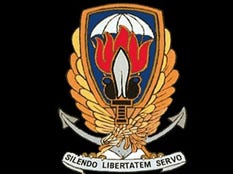
The SAS was mainly in service to the British Special Operations Executive (SOE). During the Second World War, preparations were made in the case of a possible German victory and ‘stay-behind’ guerilla warfare units were stationed throughout Europe. The model was the British Special Operations Executive, or SOE, a top-secret guerilla-commando force established in 1940. It was the brainchild of Winston Churchill and was called ‘Churchill’s secret army.’ This program would eventually be adopted into NATO. After the Allied victory, these ‘stay-behind’ units were not disbanded but rather were strengthened and expanded in almost every European country, with direct aid and encouragement from the United States.
These secret armies, also called “stay-behind” units, later became part of NATO’s secret armies and ran Operation Gladio. These secret armies were used against the European people, staging false-flag events and acts of terrorism and blaming it on the communists in order to influence support for far-right wing government.
This is what the Green Berets, US Special Forces was created as an American mirror of.
In fact, Frank Wisner, Director of the CIA covert action department Office of Policy Coordination (OPC), was setting up stay-behind secret armies across Western Europe and in his operations collaborated closely with the Special Operations branch of MI6 of Colonel Gubbins. The SAS and the American Green Berets, trained to carry out special missions clandestinely in enemy-held territory, were at numerous instances during the Cold War - brothers-in-arms and among other operations also trained the secret stay-behind armies.
The SAS were disbanded at the end of the war in October 1945, but were quickly reborn in 1947 and used to fight behind enemy lines in Malaysia. In their biggest deployment since the Second World War, SAS units served in the Gulf in 1991 and together with the U.S. Green Berets secretly trained and equipped the Kosovo Liberation Army (KLA) forces before and during the 1999 NATO bombardments of the Serbian province of what was Yugoslavia at the time.[2]
Daniele Ganser writes in his “NATO’s Secret Armies”:
“Both paramilitary units cooperated closely. As a sign of intimate cooperation the members of the American Special Forces unit wore the distinctive Green Beret unofficially ever since 1953 in order to imitate their SAS idols who had long used that insignia…Returning the respect the British too cultivated the Special Forces alliance and in 1962 made the commander of the U.S. Green Berets, Army officer Major General William Yarborough, an honorary member of the SAS.”
The reputation of the SAS would be shrouded in infamy with their sensitive deployments throughout the world including the training of Pol Pot’s forces in the Khmer Rouge. SAS units were stationed in Northern Ireland where Irish republicans considered the SAS as nothing less than terrorists. “A very strong case can be made that even from a British point of view, the SAS were part of the problem in Northern Ireland rather than part of the solution.”[3]
The SAS’s relevance to the activities of the Green Berets will be of particular relevance to our discussion in this paper, since it was in fact the SAS Orwellian model from their function in Malaysia (then called Malaya) to which the Phoenix Program was created as a mirror of.
This British imperial ideology viewed itself as the pinnacle of a natural hierarchy of the world, and those who resisted this ‘natural order’ of things were seen as an ‘enemy’ to the security of its envisioned social equilibrium.
Recall that Orwell himself was a part of this envisioned system of equilibrium in service to a ‘natural hierarchy.’ Orwell wrote his book “1984” after his experiences working in Burma working as an Imperial policeman where he had been supervising and participating in torture techniques used against the Burmese people in service of the British Empire. Orwell, who continued to work for British Intelligence after his Burma experience, likely not an entirely voluntary situation, had become simultaneously the tormentor-programmer as well as the tormented-programmed. In other words, both the characters O’Brien and Winston, were different sides to Orwell himself, a collection of experiences he had undergone and inflicted as a policeman in Burma, portrayed in a so-called “dystopic future” in his book “1984,” when in fact it had already become a reality under the British Empire and its East India Company military.
It was Edward Lansdale, co-creator of the Phoenix program followed by Operation Mongoose, and the man behind the Green Berets program of the 1960s, who would do so much to carry forward this legacy (under a Gladio structure) for the United States’ secondary position on the throne (afterall, the Green Berets were taking their instruction from their British idols).
These American gladiators, which had become relics during the post-WWII period under Eisenhower, had new life breathed into them by Lansdale under the CIA directorship of Allen Dulles. As discussed in Part II of this series, these gladiators (US Special Forces/Green Berets) were not beholden to the US military but to the CIA, they were not in service to the US government or its people but were rather to function as a secret army specialised in covert operations to which few people were even informed about who were not in the Allen Dulles and Frank Wisner’s close intelligence circle, the OPC branch (to which Lansdale was a member of and before that was a member of the OSS during WWII).
These OPC covert operations functioned in service to the Gladio structure which was inherently made up of the fascists who had to go underground after WWII was lost. These men were for a pro-imperialistic, pro-monarchy League of Nations world, and they justified their cloak and dagger antics under a pro-democracy/anti-communist façade.
This was an old boys club. Ivy-league, Wall Street banker and lawyer types, or in the case of Lansdale, Madison Avenue. These were the King’s Men, a true aristocratic “gentlemen’s club”, or at least this is how they liked to think of themselves. Gentlemen spies à la James Bond “shaken not stirred” martini cocktail drinkers that can carry themselves with a sophisticated confidence in a fully decked out tux suit amongst society’s upper echelons.
The Frank Wisner OPC group considered themselves social elites, in blood and in name, many coming from upper class “distinguished” families, including the Allen Dulles and James Angleton families. James Burnham the father of neo-conservatism was another prestigious member of the OPC.
This grouping within the CIA viewed themselves as the Knights of the Round Table, in fact, as we will see later on in this series, most of those who were involved in the Gladio networks were members of the Sovereign Military Order of Malta – and were known as the Knights of Malta.
Founded in Jerusalem during the First Crusade, The Sovereign Military Order of Malta (SMOM), officially the Sovereign Military Hospitaller Order of Saint John of Jerusalem, of Rhodes and of Malta was established. Their membership continues on today. It is a Catholic lay religious order, and claims continuity with the Knights Hospitaller, a chivalric order that was founded about 1099 by the Blessed Gerard in the Kingdom of Jerusalem. The order is led by an elected prince and grand master.
Interestingly, the Crusader insignia for the Knights of Malta bears heavy resemblance to the SAS and Gladio insignias…
Again, the Crusader theme emerges from the cloak and dagger shadows…
As discussed in Part II of this series, it was Lansdale who would revive and reform the Green Berets program, and its first major function would be in Vietnam. Along with this came a reform in military teaching as well. New recruits into the US Army were taught ideologies, philosophies and functions that they thought were a continuation of their patriotic legacy, when in fact, they were being taught an entirely new doctrine of warfare called counterinsurgency – whose goal was not to in fact end war and maintain peace, but rather to inflict perpetual warfare until centralised control is achieved - globally.
This is how the phrase “burn the village to save the village” became known around the world. Afterall, the program was named after the Phoenix, which is associated with the sun [perhaps an Apollonian sun – from the viewpoint of the old boys ‘Fascisti’ club?]. According to the myth, the phoenix obtains new life by rising from the ashes after it dies in a blaze of fiery flames before being born again.
The above image of the phoenix holding dynamite is the official emblem for the CIA’s Phoenix Program in Vietnam (minus the skulls underneath its feet).
Thus, the US Army, under the direct purview of the CIA in Vietnam, would indoctrinate the next generation of recruits (occurring in the 1960s) who were taught that it was their role to not only neutralise the enemy through such “pacification” programs like the Phoenix Program, but to take part in that country’s reform on all levels, including politically, economically and culturally. Increasingly anything that had to do with policing activity would also fall under the purview of the CIA. This included police activity within the United States as well, where Green Berets increasingly took over the management and directive of police forces within their own country, using tactics that were not for the increased safety of the American citizen.
It was not long before the Army, Navy, and Air Force all had developed many units of Special Forces which specialised in clandestine operations - Special Air Warfare squadrons and SEAL (Sea, Air, Land) teams, and these were sent into any country that would accept them. These teams were heavily sprinkled with CIA agents, and most of their direction in the field was the operational responsibility of the CIA. The Phoenix Program went international and was led and secured by Special Forces units, modeled off of the British SAS in service to a global empire.
Vietnam was to be the first experiment applying this on a massive scale. It was to be the first where there would be an attempt to create an entirely new nation that would be reborn out of the ashes, after having been severed from its cultural past along with its values and traditions.
Vietnam would be the first country to undergo shock-therapy as the CIA had done to individuals under the MK Ultra program. It was their belief that they could wield the power to write history anew, to erase all memory of the past and have a blank slate to which they could write down whatever they wish, not just wiping out the memory of one person but of an entire people.
This rewriting of memory and identity by the CIA’s MK Ultra program under Allen Dulles was most certainly viewed in Orwellian terms; that the past is what the present dictates it to be, for if it were not, it could challenge the basis for the present.
Thus, to preserve the present, the past must serve the present.
Counterinsurgency warfare, and its executioners the US Special Forces, was never a friend to the American people as will become uncomfortably clear throughout this series, since these techniques were first practiced in Vietnam having always had the intention and purpose for application in the Americas, where today it has finally come home to roost.
For King and Empire…and the Jesuits?: The Origins of Orwell’s Thought Police
“We have no eternal allies, and we have no perpetual enemies. Our interests are eternal and perpetual, and those interests it is our duty to follow.”
- Henry John Temple, aka Lord Palmerston (Britain’s Prime Minister from 1855-1858, 1859-1865), oversaw Britain’s First Opium War (1839-1842) as Head of Britain’s Foreign Office and the Second Opium War (1856-1860) as Britain’s Prime Minister against China.
Since one of the directives of the Phoenix Program was to build a new modern Orwellian state out of what previously was a centuries old system of rice farmers, we should ask ourselves the questions: 1) Why Vietnam? and 2) How did such a resourceful and efficient resistance seemingly spring out of nowhere fought by so-called “backwards people” against the massive American war machine?
Let us address this latter question first. In short, the reason why the Vietnamese were able to organize such a phenomenally effective resistance was because they had been fighting a war long before communism even existed, and long before the Americans entered the scene…
In Douglas Valentine’s book The Phoenix Program he asks the question “What is the VCI [Viet Cong Infrastructure]? Is it a farmer in a field with a hoe in his hand and a grenade in his pocket, a deranged subversive using women and children as a shield? Or is it a self-respecting patriot, a freedom fighter who was driven underground by corrupt collaborators and an oppressive foreign occupation army?”
[Note that the American military terminology for “infrastructure” when referencing the Viet Cong means any individual that was suspected of being supportive of or sympathetic to the Viet Cong.]
A “self-respecting patriot?” This must seem a far stretch for even those who ultimately denounced the Vietnam War.
In his testimony regarding the Phoenix Program before the Senate Foreign Relations Committee in February 1970, former Director of Central Intelligence William Colby defined the VCI as “about 75,000 native Southerners” whom in 1954 “the Communists took north for training in organizing, propaganda and subversion.” According to Colby these cadres returned to the South, “revived the networks they had left in 1954,” and over several years formed the National Liberation Front (NLF), the People’s Revolutionary party, liberation committees, which were “pretended local governments rather than simply political bodies,” and the “pretended Provisional Revolutionary Government of South Vietnam. Together, all of these organizations and their local manifestations make up the VC Infrastructure.”
Colby, of course, had no intentions of portraying the VCI in sympathetic terms and his frequent use of the word “pretended” deliberately distorts the nature and origin of the revolutionary forces lumped under the generic term “VCI.”
Douglas Valentine writes in his The Phoenix Program:
“To understand properly Phoenix and its prey, a more detailed and objective account is required. Such an account cannot begin in 1954 – when the Soviet Union, China, and the United States split Vietnam along the sixteenth parallel, and the United States first intervened in Vietnamese affairs – but must acknowledge one hundred years of French Colonial oppression. For it was colonialism which begat the VCI, its strategy of protracted political warfare, and its guerilla and terror tactics.”
And this is where our story shall begin…
Vietnam would be submitted to French conquest in the seventeenth century upon the arrival of the Jesuit priests. These Jesuit priests formed the Society of French Missionaries which included their business backers which not only consisted of French Imperial business but business with the British East India Company.
During this time, Britain, through its company of pirates the East India Company, began investing in opium production in India. Afterall, India needed something to produce for their British masters after the British destroyed India’s textile industry so that they would not be competitors in the cotton world market - the primary source of revenue for the British Empire before they created the opium world market.
The American’s were also brought into this with the slave-based cotton plantations of the South that were set up for British business. This led to the most costly and largest casualty war the Americans have ever fought. The British heavily relied upon their cotton market in the American South and were ready to enter the Civil War on behalf of the Confederates if it hadn’t been for the Russians interfering in favor of Lincoln.
India, through the mandate of British business interests, would become the world producer in opium and in the beginning heavily relied upon the export of its product to Southeast Asia, primarily China, who were chosen to be its largest consumer by the “free trade” charade “do as I say not as I do” double standard of the British (for the British were practising protectionism while enforcing free trade on the rest of the world). This is what led to the two Opium Wars.
The British won these wars against China, which began what the Chinese refer to as their “century of humiliation,” for the British had not only won the “right” to continue to flood China with heroin, but they had also won possession of key port cities to the Chinese land, including Shanghai and Hong Kong, to which the British opium bank HSBC (Hong Kong Shanghai Banking Corporation) was established to maintain the British Empire’s opium trade – and which continues to operate under this purview to this day on an international scale and in service to the City of London where its headquarters are based.
As will be discussed in the follow-up paper in this series, Vietnam would come to play a central role in the heroin world market as a direct consequence of this and the Jesuits priests would play a fundamental role in bringing this about.
In fact, it was part of the Jesuit Order’s central function, to deal in business matters in service to the Vatican and its five congregations within Italy, Germany, France, Spain, England and America. This privilege was sanctioned by the Vatican in the 16th century, by Pope Gregory XIII (1572-1585) who bestowed on the Jesuit Company the right to deal in commerce and banking, a right it has made extensive use of to this day.
For anyone familiar with the Templars, one cannot help but note the striking similarity between the two religious orders and their right to deal in commerce and banking. The Templars were known as among the first, if not the first, Corporation.
Is it a wonder then, that Albert Pike, the founder of the Scottish Rite Freemasonry would write in his Morals and Dogma that “The Templars were unintelligent and therefore unsuccessful Jesuits.”
The reader should be aware that because the Vatican has sanctioned this function to conduct business on its behalf to the Jesuit Order, the Jesuit Order is beyond government prosecution from any nation, they are above national law and even international law, they only answer to the law of the Vatican, which is essentially the law of the Pope.
The City of London is another example of a “Corporation” which functions above the law, in this case an ancient financial center in the middle of London that has somehow justified its continued existence beyond British law and does not have to answer to the British government. This is again what the dope trade bank, HSBC, is in service to.
In fact, a good deal of business dealings between the Jesuits on behalf of the Vatican overlapped greatly with members of the Knights of Malta and the heroin market in service to Gladio, especially prevalent in the Catholic central and south Americas but also as we will see in Southeast Asia including Vietnam.
The Jesuits are also known as the inspiration to the Father of Modern Brainwashing William Sargant who helped to create the Tavistock and MK Ultra “mind-bending” programs and wrote admiringly of the Jesuit discipline. For more on this story refer here and here.
In fact, the Jesuits, who functioned in both British and French imperial circles in Southeast Asia are at the origin of the Orwellian techniques that were used by the French and especially the British, who excelled above all, in implementing these forms of control over its colonial subjects, including in Orwell’s Burma and the inspiration for the Phoenix Program - British Malaya. And it is no coincidence that Burma (now known as Myanmar) would become one of three countries implicated in the Golden Triangle which supplied most of the world heroin market.
These forms of Orwellian control and manipulation were occurring in Southeast Asia by the British and French well before the ideology of communism was created.
During the next two centuries after French conquest of Vietnam, the Jesuit priests embroiled themselves in Vietnamese politics, eventually providing a pretext for military intervention. Specifically, when a French priest was arrested for plotting against the emperor of Vietnam in 1845, the French Navy shelled Da Nang City, killing hundreds of people, even though the priest had escaped unharmed to Singapore.
Soon the status quo was one of open warfare. By 1859 French Foreign Legionnaires had arrived en masse and had established fortified positions near major cities, which they defended against poorly armed nationalists staging hit-and-run attacks from bases in rural areas.
The French won against the Vietnamese nationalists and in 1861 a French admiral claimed Saigon for France, inflicting heavy casualties on the Vietnamese who resisted. Fearing that the rampaging French might massacre the entire city, the emperor abdicated ownership of three provinces adjacent to Saigon, along with Con Son Island, where the French immediately built a prison for rebels.
Soon thereafter, Vietnamese ports were opened to European commerce, Catholic priests were permitted to preach wherever Buddhist or Taoist or Confucian souls were lurking in the darkness, and France was guaranteed unconditional control over all of Cochin China. [4]
Douglas Valentine writes in The Phoenix Program:
Resistance to French occupation was strongest in the north near Hanoi, where nationalists were aligned with the Chinese…The rugged mountains of the Central Highlands formed a natural buffer for the French, who were entrenched in Cochin China, the southern third of Vietnam centered in Saigon.
The boundary lines having been drawn, the pacification of Vietnam began in earnest in 1883. The French strategy was simple and began with a reign of terror: As many nationalists as could be found were rounded up and guillotined. Next the imperial city of Hue was plundered in what Karnow calls “an orgy of killing and looting.”
The French disbanded the emperor’s Council of Mandarins and replaced it with French advisers and a bureaucracy staffed by supplétifs – self-serving Vietnamese, usually Catholics, who collaborated in exchange for power and position.
The supplétifs crème de la crème studied in, and became citizens of, France. The Vietnamese Army was commanded by French officers, and Vietnamese officers were supplétifs who had been graduated from the French military academy. By the twentieth century all of Vietnam’s provinces were administered by supplétifs, and the emperor, too, was a lackey of the French.
Supplétifs were also installed in the police and security forces, where they managed prostitution rings, opium dens, and gambling casinos on behalf of the French.
From the 1880s onward no legal protections existed for nationalists, for whom a dungeon at Con Son Prison, torture, and death were the penalties of pride. So, outgunned and outlawed in their homeland, the nationalists turned to terrorism – to the bullet in the belly and the bomb in the café. For while brutal French pacification campaigns prevented the rural Vietnamese from tending their fields, terrorism did not.
The first nationalists – the founding fathers of the VCI – appeared as early as 1859 in areas like the Ca Mau Peninsula, the Plain Reeds, and the Rung Sat – malaria-infested swamps which were inaccessible to French forces. Here the nationalists honed and perfected the guerilla tactics that became the trademark of the Vietminh and later the Vietcong.
Indeed the VCI leadership was molded in Con Son Prison, or Ho Chi Minh University, as it was also known. There determined nationalists transformed dark dungeons into classrooms and common criminals into hard-core cadres. With their lives depending on their ability to detect spies and agents provocateurs whom the French had planted in the prisons, these forefathers of the VCI became masters of espionage and intrigue and formidable opponents of the dreaded Deuxieme Bureau.
So to be clear, the Vietnamese nationalists (in other words those who refused to remain a colonial possession of France) first began their war against the French colonial oppression in the mid 1800s, and the Vietnamese nationalists were allied with the Chinese in this endeavour. This was overlapping with China’s fight against Britain in the Opium Wars.
Thus, this fight began well before communism existed and was centered around a nationalist fight to live free of colonial oppression. Almost one hundred years later, this fight against the French colonists waged by the Vietnamese nationalists would be continued by the communists, who received the continued training from the previous generations of nationalists in warfare and espionage.
This is how the Vietnamese had become so good at combating colonial war strategy. They had almost 100 years of previous experience. And as we will see, the American Special Forces entirely based their training on the tactics of the British Special Forces and the “pacification” methods of the French commandos in Algeria. The Vietnamese had already had many decades of experience fighting “pacification” tactics in their war against imperial France.
During the late 1800s, the Japanese who were also of an imperial ideology and later an imperial fascist ideology, began war with China called the Sino-Japanese Wars. The First Sino-Japanese War was fought from July 1894 to April 1895 to which China lost but was able to sue for peace, relinquishing some of its land.
The Second Sino Japanese War (1937-1945) overlapped with WWII and China’s own 22 year long civil war (1927-1949) fought between Mao Zedong and Chiang Kai-shek. During this same period the Japanese had also invaded and occupied Vietnam and actually collaborated with the French Legionnaires who supported fascism. Recall, the French allowed the Nazis to effectively walk right into France without a fight and the pro-Nazi French Vichy government was established with hardly any effective resistance. It was only as a reaction to this that the French Underground, known as “La Resistance” was later formed to fight back the French fascists that had taken over the country. President de Gaulle was one of those who fought heroically on the side of the resistance and would later survive over 30 assassination attempts on his life while President of France because he did not go along with the fascist imperial agenda that France was expected to play ball in. He also kicked out the NATO headquarters, along with its Gladio secret army headquarters that were arrogantly stationed within France while they attempted to repeatedly assassinate de Gaulle. For more on this refer here.
Contrary to what we are told, Chiang Kai-shek was not a nationalist but a war lord and had enough sympathy for the fascist imperial ideology of the Japanese that it was a known concern by the better Americans in the OSS, since Chiang was being heavily courted and promoted as a darling in the United States with such publications as the Time Magazine, where he was displayed on the cover repeatedly.
The last cover image is from Life Magazine and features Chiang’s wife Soong Mei-ling who was fluent in English and a Methodist. Both Time and Life Magazines were owned by Henry Luce who worked for the CIA, and thus the message is crystal clear, Chiang had the blessing of Allen Dulles.
The main reason why Chiang was considered a darling to the OSS and later CIA intelligence circles under Allen Dulles was because, as we will see in a following paper, he played a primary role in the heroin market of Southeast Asia and was one of their kind, that is, of a pro-imperialistic fascist leaning perspective.
Chiang was never a nationalist but was known during WWII, when certain members of the OSS were genuinely trying to help China fight the Japanese fascists and create a line through Burma to China for war supplies and basic resources, Chiang would constantly sabotage any coordinated war effort to help fight the Japanese fascists. This included Chiang repeatedly refusing to cooperate with even the OSS against the Japanese.
Chiang justified his “war strategy” by claiming it was a strategy of attrition. Effectively, Chiang was the first to teach the Americans the “burn the village to save the village” motto. Chiang was known to literally burn down major city centers in China, that were ancient city centers full of Chinese heritage, without any forewarning while the Chinese people slept, claiming that the Japanese would have simply conquered the city and used its resources. The Chinese people were regarded as expendable to Chiang en masse. Thus, Chiang burnt and destroyed one major Chinese city after another as part of his “patriotic” duty. Chiang also avoided direct battle with the Japanese fascists whenever he could, which was most of the time (Chiang was clearly not willing to discard any of his cards and was willing to collaborate with whoever was going to end up being top-dog in the region, including the Japanese fascists, for his piece of the pie - and sell out the Chinese people in the process). Who wouldn’t want Chiang as President of the Republic of China after such feats of heroism? Instead he had to settle ruling his little island, Taiwan, and proclaiming himself the President of all of China nonetheless, despite the people in mainland China having very clearly rejected him.
After all, it was not Chiang who won the war against the genocidal savagery of the Japanese, it was the true nationalists (from the Sun Yat-sen school) who overlapped and were allied with the communists fighting under the leadership of Mao (not everyone fighting Chiang during this time was a communist). However, Chiang was a true dictator and did not believe he needed the support of the people to be declared their ruler. For more on this refer here.
This was effectively the only thing Chiang accomplished other than his heroin business during the war, to the frustration of the better members of the OSS, in addition to attacking the actual Chinese nationalists who were fighting off the Japanese fascists.
The Japanese fascists wanted to ethnically cleanse China, as well as the entire eastern coastline of Asia. Ho Chi Minh led the valiant fight against the Japanese fascists in Vietnam. The Japanese fascists committed the most brutal genocide in terms of torture and savagery, perhaps in all of history, known as the Asian holocaust and to which westerners often are completely unaware of.
Douglas Valentine writes in The Phoenix Program:
In 1941 the Communists son of a mandarin, Ho Chi Minh, gathered the various nationalist groups under the banner of the Vietminh and called for all good revolutionaries “to stand up and unite with the people, and throw out the Japanese and the French.” Leading the charge were General Vo Nguyen Giap and his First Armed Propaganda Detachment – thirty-four lightly armed men and women who by early 1945 had overrun two French outposts and were preaching the gospel according to Ho to anyone interested in independence. By mid-1945 the Vietminh held six provinces near Hanoi and was working with the forerunner of the CIA, the Office of Strategic Services (OSS), recovering downed pilots of the US Fourteenth Air Force [Author’s note: Mao would do the same for the US Air Force in China]. A student of American democracy, Ho declared Vietnam an independent country in September 1945.
Lord Louis Mountbatten (who used the phoenix as an emblem for his command patch) and the British were put in charge in the South. The British then outlawed Ho’s Committee of the South and arrested its members. In protest the Vietnamese held a general strike. On September 23 the Brits released from prison those French Legionnaires who had collaborated with the Nazis during the occupation and had administered Vietnam jointly with the Japanese. The Legionnaires rampaged through Saigon, murdering Vietnamese with impunity. As soon as they had regained control of the city, the French reorganized their quislings and secret police. The British exited, and the supplétif Bao Dai [the Emperor of Vietnam who ruled from his French resort in the Riviera] was reinstalled as emperor.
By 1946 the Vietminh were at war with France once again, and in mid-1946 the French were up to their old tricks – with a vengeance. They shelled Haiphong, killing six thousand Vietnamese. Ho slipped underground. The outgunned Vietminh, meanwhile, effected their strategy of protracted warfare. Secret cells were organized, and guerilla units were formed to monitor and harass French units, attack outposts, set booby traps, and organize armed propaganda teams. Assassination of collaborators was part of their job. Company – and battalion-size units were also formed to engage the French in main force battles.
By 1948 the French could neither protect their convoys from ambushes nor locate Vietminh bases.
The [French] GCMAs [composite airborne commando group] were formed concurrently with the US Army’s First Special Forces at Fort Bragg, North Carolina.[Author’s note: Recall from Part II of this series that other than the British SAS, the Green Berets were modeled off of the French commandos brutal war tactics in Algeria.]
By early 1950s American soldiers were fighting alongside the French and the 350-member US Military Assistance and Advisory Group (MAAG) was in Saigon, dispensing and accounting for US largess.
Ngo Dinh Diem, a Catholic mandarin from Hue…[along with] his brothers Nhu, Can, and Thuc (archbishop of Hue), thereafter controlled tens of thousands of Can Lao followers through an interlocking maze of clandestine cells present in the military, the police and security services, the government, and private enterprise.
In fact, the better members of the OSS had been working with Ho Chi Minh during WWII to fight the Japanese fascists. Ho Chi Minh assumed this alliance with the Americans would continue once the war was over, and that Vietnam could finally be free as a people from colonial subjugation.
On September 2, 1945 Ho Chi Minh as president of the new nation signed Vietnam’s Declaration of Independence which was a direct reference to the American Declaration of Independence. As incredible as it may seem today, the Vietnamese declaration began with the famous lines “All men are created equal. They are endowed by their Creator with certain inalienable rights, among them are Life, Liberty, and the Pursuit of Happiness….” The document went on to state “A people who have courageously opposed French domination for more than eighty years, a people who have fought side by side with the Allies against the Fascists during these last years – such a people must be free and independent.”
Under the British and French imperial foreign policy, to which Allen and John Foster Dulles were in service to the former, this was completely intolerable. If this were to spread throughout the Asian countries and onto Africa, this would have been the end to all their colonial possessions, something that would have completely bankrupted and gutted the British and French Empires.
Thus, they would have to select their own man to represent their image of democracy and freedom to the western people who were largely unaware of the eloquent words of Ho Chi Minh.
They would select a man who was entirely unknown to the world, including the Vietnamese people, called Ngo Dinh Diem. Diem was born into a prominent Catholic family, his father was a high-ranking mandarin for Emperor Thành Thái during the French colonial era. Diem had been educated at the French-speaking schools and considered following his brother Ngo Dinh Thuc into the Catholic priesthood, but eventually chose to pursue a career in the civil-service. Thuc became Archbishop of Hue in Vietnam and played a large supporting role during Diem’s rule.
As the story goes, which is a very dubious one, Diem was rising rapidly in his civil service career when he suddenly made the decision to denounce the then Emperor of Vietnam Bao Dia as a tool of France, which he was. Diem is then exiled in the early 1930s from Vietnam and lives during his several year exile in Japan and the United States until 1953 whereupon he continues his exile from Vietnam…in a Benedictine monastery in Belgium. (source: Prouty’s book JFK)
[Note: The Benedictine Order produced both the Knights Templars and Knights Hospitallers (aka: the Sovereign Order of Malta) during the first Crusade, and like Ignatius Loyola, who founded the Society of Jesus (aka: The Jesuits) 1000 years later, Saint Benedict isolated himself in a ‘sacred cave’ where, over the course of three years, he went through his mystical experience leading to the founding of his new order in 529. Also noteworthy was that it was at the Benedictine Monastery of Our Lady of Montserrat in Spain, that the Spanish mercenary Ignatius Loyola devoted himself to establishing his new society.]
Then seemingly out of nowhere, Emperor Bai Dai selects Diem on June 18, 1954, to become premier in the Vietnamese government.
Col. Fletcher Prouty writes in his book The CIA, Vietnam and the Plot to Assassinate John F. Kennedy:
“Diem arrived in Saigon on June 26, 1954, met Lansdale on June 27, and formally assumed that office on July 7, 1954. After an election campaign carefully orchestrated by the CIA and Lansdale, Diem became president of South Vietnam on October 1954.”
The president of what was a non-existent country just a few seconds ago.
It was Lansdale who would remain the closest American advisor to Diem for the first several years of the Vietnam War. And Diem had no congress, no army, no police, no tax system – nothing that was essential to the existence of a nation.
It was the perfect blank slate for Lansdale’s human laboratory.
Edward Lansdale’s Human Laboratory: the Saigon Military Mission – A Manufactured Migrant Crisis
It was Allen Dulles who suggested Edward Lansdale be added to the group of American Liaison officers that General Henri Navarre, the French commander had agreed to accept in Indochina. The committee thought this arrangement would prove to be acceptable and authorize Dulles to put his man, Lansdale, in the Military Assistance Advisory Group (MAAG), Saigon.
As will be discussed in the follow-up paper in this series. One of Lansdale’s primary objectives was securing the heroin market under Anglo-American control which at the time was under the control of the French.
Lansdale had previously worked for the OSS to Allen Dulles and Frank Wisner’s approval and was later recruited to the old boys club OPC branch responsible for covert operations in November 1949. There he worked under an experienced Far East hand, Col Richard G. Stilwell, in the Far East/Plans division.
On January 20, 1954, the CIA authorized Lansdale to create the Saigon Military Mission (SMM). This unit was led by US Special Forces under Lansdale’s direction and was in place by July 1954. Just in time to support the new president Ngo Dinh Diem, of the new country South Vietnam. In May 1954, Ho Chi Minh’s army defeated the French forces at Dien Bien Phu. The Geneva Conference was convened to arrange an agreement between the new countries of North and South Vietnam. One proviso of that agreement authorized any resident of the north who chose to move to the south to do so, and the same applied to those in the south.[5]
On March 8, 1955, in a speech delivered nationwide, Secretary of State John Foster Dulles reported, “So far, about six hundred thousand persons have fled from northern Vietnam, and before the exodus is over the number will probably approach one million. They are destitute and penniless persons with only such possessions as they can carry on their backs.” The number of refugees ended up exceeding one million, the total being over 1,100,000.
The Saigon Military Mission, led by US Special Forces under the direction of Lansdale, recruited Vietnamese to take part in psywar tactics to provoke a mass migration of northern Vietnamese to leave their ancestral villages after centuries of having lived in this one location. Over one million northern Vietnamese were herded into South Vietnam by Lansdale’s SMM, the largest mass migration to have ever been facilitated so directly by another country ever. These northerners were convinced to travel to the South where they were promised security from whatever was presently causing them to frantically leave the North thanks to the US Special Forces SMM psywar tactics.[6]
More than 660,000 were transported in US Navy ships under the supervision of CIA’s Saigon Military Mission. About 300,000 traveled on the CIA’s Civil Air Transport aircraft, and others made the trek by foot .
Lansdale, formerly in the work of advertising, would become known for his eccentric and diabolically imaginative psywar tactics that would play on the cultural superstitions of the people he was conducting warfare on. In the Philippines, where Lansdale was stationed before Vietnam, he had spread rumors that Aswangs, blood-sucking demons in Philippine folklore, were loose in the jungle. His men would then capture an enemy soldier and drain the blood from his body, leaving the corpse where it could be seen. It was used to great success and caused the communist Huks to flee the region.
Lansdale had phenomenal success in the Philippines with such tactics, as well as Fun and Games antics, which were staged mock battles to win political support for Ramon Magsaysay from the unsuspecting villagers. These Fun and Games antics were later expanded to give certain personnel (who were generally ignorant of warfare) tours of Vietnam from a safe distance in a helicopter, such as Robert McNamara, in order to shape American misperception of the war.
Thus, we can only imagine the sort of violent psywar tactics Lansdale used to convince over one million northerners to leave their centuries old homes and villages and migrate to the South where they were promised safety and provisions. However, shortly after they were dumped into South Vietnam, mayhem ensued.
Prouty writes:[7]
[The SMM]…members were now teaching “paramilitary” tactics – today called “terrorism” – and doing all they could to promote the movement of hundreds of thousands of “Catholic” Vietnamese from the north with promises of safety, food, land, and freedom in the south and with threats that they would be massacred by the Communists of North Vietnam and China if they stayed in the north.
This movement of Catholics – or natives whom the SMM called “Catholics” – from the northern provinces of Vietnam to the south, under the provisions of the Geneva Agreement, became the most important activity of the Saigon Military Mission and one of the root causes of the Vietnam War. The terrible burden these 1,100,000 destitute strangers imposed upon the equally poor native residents of the south created a pressure on the country and the Diem administration that proved to be overwhelming.
What Americans fail to realize is that the Southeast Asian natives are not a mobile people. They do not leave their ancestral village homes. They are deeply involved in ancestor worship and village life; both are sacred to them.
Nothing could have done them more harm than to frighten them so badly that they thought they had a reason to leave their homes and villages.
One cannot help but wonder if similar tactics are being deployed today throughout the central and south Americas to bring about the migrant crisis hitting the United States today…
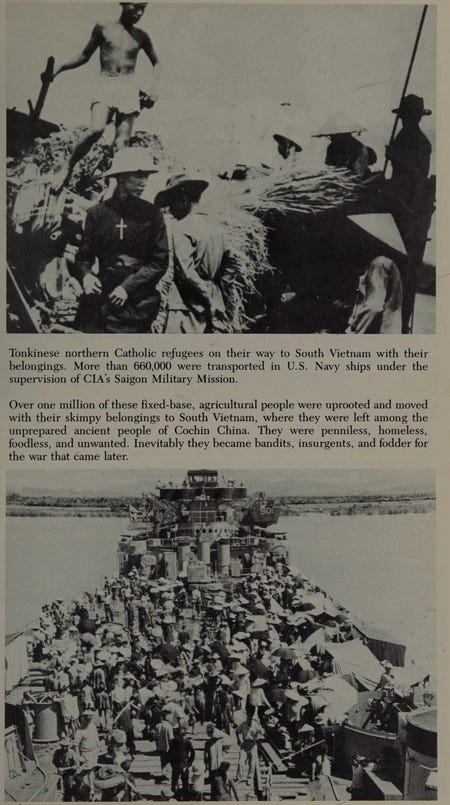
Prouty continues:
These penniless natives, some 660,000 or more, were herded into Haiphong by the Saigon Military Mission and put aboard US Navy transport vessels. About 300,000 traveled on the CIA’s Civil Air Transport aircraft, and others walked out. They were transported, like cattle, to the southernmost part of Vietnam, where, despite promises of money and other basic support, they were turned loose upon the local population. These northerners are Tonkinese, more Chinese than the Cochinese of the south. They have never mixed under normal conditions.
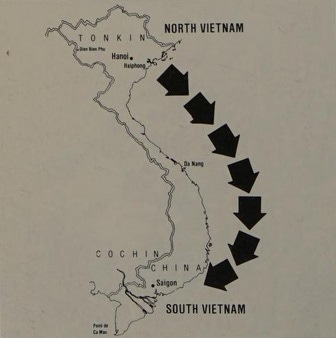
Douglas Valentine adds to this, writing:[8]
“As chief of the CIA’s Saigon Military Mission Lansdale used the exodus to mount operations against North Vietnam. To this end he hired the Filipino-staffed Freedom Company to train paramilitary teams, which, posing as refugee relief organizations supplied by the CIA-owned airline, Civil Air Transport, activated stay-behind nets, sabotaged power plants, and spread false rumors of a Communist bloodbath. In this last regard, a [Catholic] missionary named Tom Dooley concocted lurid tales of Vietminh soldier’s disembowelling pregnant Catholic women, castrating priests, and sticking bamboo slivers in the ears of children so they could not hear the Word of God. Dooley’s tall tales of terror galvanized American support for Diem but were uncovered in 1979 during a Vatican sainthood investigation.”
The evacuation of these over one million Catholic Tonkinese had begun in the Red River delta areas in Tonkin, under the urging of the Catholic bishoprics of That Dien and Bui Chu.
All police power had vanished with the departure of the French. The economy had been shattered with the ouster of the Chinese in response to a Diem edict. And the nation had no army of its own to protect its “leader” or to defend the republic.
Into this mess came the one million, one hundred thousand refugees.
Since Diem was a staunch Catholic, and whose government was sponsored by the Catholic Church, these northern Catholics were favored over the actual local Southern Vietnamese residents, and the Catholic migrants quickly found work in key positions in the Diem government and were brought in as enforcers to the Orwellian structure.
Typical of the way things developed, Dr. Tran Kim Tuyen, a northern Catholic who had left Tonik Chin in 1954, was made chief of the Office of Political and Social Affairs, the secret government apparatus that had been organised by the CIA to keep tabs on dissenters.[9]
This was an oppressive, omnipresent internal spy organization that used teachers to gather information from children, wives to tell on husbands, and employers to inform on employees. Thousands of these northern Catholics were put into such positions of responsibility by the CIA and the Diem government. [9a]
Before long, the “friends” according to the Diem brothers and their CIA backers in Saigon were the northern Catholics, and the “enemy” was the native southerners.
Those that were not hired by the Diem government, which was the majority of northern refugees, had no choice but to resort to banditry of the southern villages just to survive. The Southerners who lived comfortably enough that lack of food was not a real issue, still did not have enough to feed the hundreds of thousands of people who had access to absolutely no food nor water and had to live in the forests.
Incredibly, in this mess of a situation where the native South Vietnamese villagers were subjected to repeated raids by these desperate hordes of northern farmers turned bandits, it was these Southerners who were labeled by the Diem government as the new enemy, the Viet Cong.
In January 1955, using these resettled Catholic refugees trained by the Lansdale’s Freedom Company as cadre, Lansdale began his Civic Action program. He described it as a “cycle including not only political indoctrination, physical toughening, and learning to use tools at the training camp, but a further period of service in a hamlet or village…as well as help establish self-government.”[10]
In other words, these Catholic refugees were to be the civilian enforcers of the Diem government’s Orwellian system.
Lansdale would use Orwellian titles for his programs such as the “Extended Arms for Brotherhood” program, “Operation Brotherhood”, “Citizens’ Retraining Camp” otherwise known as “Strategic Hamlets”, the “Civic Action Program”, “Peoples’ Arms of Brotherhood” and the “White Dove Resistance Sisters.”
Despite Orwell’s book “1984” having already been published in 1949, such names rather bizarrely seemed to have at least partially worked in reassuring the American people that American’s were doing God’s work in Vietnam.
Prouty writes in his book JFK:
During WWII, after the Italian army had surrendered, we learned that during the Fascist dictatorship the cities and towns of Italy had been so long without effective government that they needed assistance in order to reestablish some sort of local administration. The army set up units for this work, called Civil Affairs and Military Government. These CAMG units proved so successful that they continued on into the north of Europe as the Allied armies rolled into Germany.
When Lansdale was sent to the Philippines in 1950, he created a Civil Affairs Office there. He had prevailed upon President Ramon Magsaysay to create a psychological warfare division as part of his own presidential staff and then had named it the “Civil Affairs Office.” This novel military task began with WWII and then moved right into the Cold War under the sponsorship of the CIA.
Inevitably, Lansdale moved this concept of civil affairs to Vietnam with him [author’s note: and would later move it to Central and South America]. Under Gen. John O’Daniel, the head of the Military Assistance Advisory Group (MAAG), there were four staff divisions: Army, Navy, Air Force, and Pacification. Lansdale headed Pacification, which ostensibly had a civil affairs-type role.
Other parts of the civil affairs program became known as the Strategic Hamlet project of later years. And, before the war was over, the CIA had set up the Phoenix program, supposedly along civil affair lines; actually, it became one of the most brutal and murderous creations of the war.[11]
In an attempt to create a new nation, to provide it with the means to defend itself with police and an army, to develop its agriculture and economy, and to create schools and hospitals, all kinds of Americans were brought into Indochina to work with the CIA and its Saigon Military Mission, to work with the growing US Military Assistance Advisory Group (MAAG), and to increase the manpower of the CIA’s many proprietary companies in Southeast Asia and their burgeoning band of mercenaries.
Diem’s foolish edicts greatly exacerbated the crisis South Vietnam was being embroiled in.
Diem’s edicts were that the French must leave which meant any structure of police and army enforcement and rule of law, and the Chinese must leave who had provided essential trade with the Vietnamese people for centuries. These edicts assured the destruction of the Vietnamese village-type economy and way of life, that is, no law and more importantly no food and water.
In the process they paved the way for the entry of the US Army, Navy, Air Force, Marines, and Coast Guard to take part in the Vietnam War, under the guidance of the CIA’s master planners.
These US Army Special Forces commandos were trained in “behind-the-lines” antiguerrilla and intelligence-gathering operations as part of Lansdale’s “Civic Action” pacification program, which later became the Phoenix Program.
Working in twelve member A teams under cover of Civic Action, the Green Berets organized paramilitary units in remote rural regions and SWAT team-type security forces in cities. In return, they were allowed to occupy strategic locations and influence political events.
By the late 1950s, increasing numbers of American Special Forces were in South Vietnam practicing the terrifying black art of psychological warfare.
The Five Finger System
In November 1985, the former director of central intelligence, William Colby, appeared on Larry King’s late-night talk show. At one point, King references the agencies political assassinations manual that was discovered in Nicaragua and asked Colby’s thoughts on this. Colby responded that it was true there had been a time when the CIA had set up political assassinations but that as Director of Central Intelligence from 1973 to 1976 he could confidently reassure Americans that it was he who had personally put an end to this practice, stressing that he did not approve of killing anyone in cold blood. However, in a seemingly flawless demonstration of Double Think, he added that this view did not include the “enemy.” An enemy, he said, should be killed.
Doublethink is an Orwellian technique that requires that one be both conscious and unconscious of the fact that they are telling deliberate lies while genuinely believing them; to deny the existence of objective reality and all the while to take account of the reality which one denies.
Colby was the man who headed the dreaded Phoenix program in Vietnam, and who publicly took credit for the fact that at least sixty thousand Vietnamese had been killed “in cold blood.”[12]
This also calls into question what exactly defines said “enemy”? In the case of Vietnam War, which has been shown as the mass confusion that it was, the enemy became anyone who resisted to go along with the Civic Action pacification program, including anyone who looked horrified, anyone who looked terrified and ultimately anyone who ran.
Central to Phoenix was that it targeted civilians, not soldiers.
Southern villages were told be weary of the Viet Cong lurking about in the forests: “They will try to gain your sympathy, they will try to convince you that you need to help them. If you are caught giving them food or any other form of aid, you will be considered no different and will be treated no different. Your fate will be no different than if you were a Viet Cong yourself.”
The village chieftains were told to inform the Americans if they suspected Viet Cong were close by, or if they raided their villages. More often than not when this happened, the Americans came swooping in several hours later (after the raid of banditry was long over) and shot at anything that moved.
This was the American military strategy against said “enemy”. Is it any wonder that increasingly, the peaceful Vietnamese farmers, who perhaps never considered themselves nationalists or communists to begin with, began to join forces with the communist resistance to take back their land.
As more and more villages were raided by the starved immigrants from the north, more and more Southern Vietnamese found themselves in the same predicament as the northerners, with their villages destroyed they had no choice but to also live in the forest and resort to stealing for survival.
There is no drinkable water that is available in southern Vietnam from a fresh water source. Most of the people relied upon earthen jars that they left outside to collect the rainwater. These earthen jars were made by the Chinese and were part of the trade for the Vietnamese rice product.
Incredibly, Diem’s police as part of their terrorising of the villagers was to shoot at these earthen jars. With the Chinese forbidden to trade with the Southern Vietnamese, they had no means of replacing these vital containers for rainwater collection. The people in the village were driven mad by the lack of water, and this alone was reason enough for an entire village to have to abandon their home and resort to banditry in search of other villages stored rainwater.
Again, these policies were “make war” policies. No one in their right mind would possibly think that such antics were bringing peace and stability to these people who had lived peaceful and stable lives for centuries.
Among the worse Orwellian psywar strategies was that of the Five Finger system, otherwise known as the One Hand system. This was the system the French commandos used in Algeria, again one of the primary models for the US Special Forces and which were taught as well to their Vietnamese “elite guard”, the Vietnamese Special Forces that had been trained by the Filipino Special Forces of Lansdale.
Prouty describes the brutal psychological method of deconstructing your “enemy,” as such:
1. An armed group rushes into a village and immediately intimidates its people by burning huts and shooting a few random people, if necessary, and then rounding up everyone else in the center of the village.
2. The invaders know that the elders are the leaders, so they single out the oldest active male and order him to point out the members of his family, then have them stand by him in one group. The invaders may have brought with them some informer or agent who will select this elder for them.
3. This first group becomes the “thumb,” or Group 1 on a scale of 5. Then the intruders ask the elder, “Who of the remaining villagers were close to the French or the Chinese? He points out a few families. They are thenceforth declared to be “enemy” and become Group 5.
4. The elder is asked who are his own enemies or persons he does not trust. These, too, are thrust into Group 5 (There is no point in asking, “Who are the Communists?” The villagers wouldn’t know. They don’t know the word or its implication as “enemy.”
5. Then the others in the village are asked which group they are closest to, and the elder is asked to verify this. These “indefinite” groups are logically numbered 2 or 4. Group 2 identifies with the leader, his relatives, and his friends. Group 4 identifies with the “enemy,” Group 5.
6. Those who belong to none of the above groups become Group 3; this is usually the largest of the five groups.
The invaders tell the chosen elder that he will be responsible for the administration and defense of his village. Then they order the chief to “train” Groups 3 and 4 and to move them closer to his trusted circle, or they will be eliminated.
Before they leave, the invaders either shoot the members of Group 5 or tie them up and take them away for “reorientation” and “pacification.” This places the village in the hands of the elder and leaves no “enemies” there. The Group 5 members will never be seen again.
In the Five Fingers system, it can be seen that if the invaders, perhaps with prior knowledge, had selected a Tonkinese “refugee” [a northerner] as the leader of the Group 1 in the village, the natives and owners of the village property would automatically be put in Group 5 and either be killed or removed. This would be justified, since they would have been “identified” as the “enemy.”
This process made it possible for the newcomers to take over many villages; the system was used all over Vietnam during those terrible early days when there was no true government and after the one million northerners had moved in, before anyone had ever heard the word “Vietcong” and its Communist connotation. The natives became the enemy.
Diem, whose government was under the sponsorship of the Catholic Church, had an archbishop for a brother, called Ngo Dinh Thuc. Thuc was the archbishop of Hue and head of the Catholic clergy of two thousand, including four bishops who served in the provincial regions.
The outcome of this mass migration of northerners, a large portion who identified as Catholic, was a very predictable one on the part of Lansdale and his overseers. Almost from the start of his regime, in 1955, Diem initiated land-reform measures by issuing new land ordinances. The “traditional landowners were required to declare their uncultivated land; if they failed to bring any unused holdings into production, the government would seize the land and use it for the settlement of refugees from the north. In this manner Diem ‘legally’ acquired an enormous amount of land for the actual resettlement of more than half a million ‘invaders.’ Such actions made no friends for Diem in the south and became the basis for much of the violent rioting, called ‘insurgency,’ that developed in later years.”[13]
Prouty writes:
By 1959 Diem had instituted another idea. He set up “Agrovilles,” which were intended to be semirural communities in which all families could enjoy the amenities of the town and still have their basic garden property. This is an old idea; in fact, one of the underlying, unstated objectives of the thirty-year war in Indochina was to bring about the breakup of this ancient and traditional communal style of living.
The Agroville concept was a failure, primarily because of the continuing friction caused by the burden of the million-plus refugees. Then there was a new development. A plan for the “pacification” of the southernmost region of Vietnam, the Mekong Delta, was proposed to Diem in November 1961, just after General Taylor had left Saigon and returned to Washington.
It was sponsored by R.G.K. Thompson, a British civil servant who had come to Saigon from the position of permanent secretary of defense in Malaya (now Malaysia). Diem had issued a request for experienced third-party…officials to assist him with counterinsurgency problems. Thompson came as part of the British Advisory Mission to Saigon. He began by laying out a plan for the “pacification” of the Mekong Delta region.
…”Pacification” became a term drenched in blood. Borrowed from the French commandos in Algeria by US Army Special Forces…it meant to hit an area as hard as possible in order that it would be reduced to rubble – that is, “pacified.” “Pacification” became the battle cry of the dreaded Phoenix program that was operated under the direction of the CIA in later years.
Thompson…had plenty of experience with pacification in the years of rebellion in Malaya, [and] preached a program that could go either way. Thompson traveled to Washington and gave briefings, attended by this author, on the subjects of: (a) British methods of putting down the rebellion in Malaya and (b) his plan for the pacification of the Mekong Delta by the creation of Strategic Hamlets. These discussions were highly confidential.
…From the start, it was made clear that Thompson’s charter would be limited to matters of “civic action”…This Orwellian play on words had much to do with the way war-making policy developed in Vietnam…in…the vast Pentagon universe “civic action” had been adopted by the army’s Special Warfare section as an increment of what it called “unconventional warfare.”
The central idea behind the Strategic Hamlets were to clear the area of opposition through “pacification” and build these Strategic Hamlets that would function as the new villages, cleared of the “wrong” sort of people. It appears Diem genuinely believed this was an honest intention of the Phoenix Program and Strategic Hamlets that would lead to a great new Vietnamese nation.
In the end, there was a lot ”pacification,” a lot of missing people, tortured people and murdered people but there was not a lot of functioning new villages that were well-protected from the ever increasing number of starving people resorting to banditry and Strategic Hamlets became for many something more closely resembling a concentration camp.
Edward G. Lansdale was a leader in the development of the counterinsurgency plan for Vietnam, and author of the new Special Forces curriculum. But he would not stick around to see things continue to unravel to the very end. Vietnam buckled under the weight of the colossal mess it was subjected to like a body with nothing but shattered bones. Vietnam was certainly not safer and certainly not more stable. American GIs who had not been destroyed in the meat grinder of America’s war machine were destroyed mentally and spiritually, returning with heroin addictions and haunted for the rest of their lives with visions of their terrible crimes upon the innocent. Whole American communities and their future generations went through their own form of shock therapy, with the return of these ghostly men who were unrecognisable to their loved ones.
But one thing for certain was accomplished by the Vietnam War for the old boys club. Counterinsurgency had been born out of the ashes of the Phoenix Program and would serve as the new manual for modern day perpetual warfare in service to the Gladio vision.
And this was not the only success that came out of the wreckage of flesh and bone. The control of the Southeast Asian heroin market was now under Anglo-American control, formerly under French dominance. The Americans had come in with the pretence of helping the French win their colonial war against the Vietnamese, but the French were betrayed and lost their most prized jewel in Southeast Asia, the heroin market.
Thanks to Lansdale who secured both of these successes, the Americans had become the top dogs in the Gladio hierarchy, for whoever controls the heroin, controls the funding for ever more black operations and Orwellian parallel states.
Lansdale would not see through to the very end the outcome of his program in Vietnam, it had been set into motion and was locked in place by the time he left. And after all, he had much greater things to do, since his ultimate achievement was yet to come - the implementation of the Phoenix program throughout the Americas, for the Americas were also under threat by communist/nationalist resistances which was bad for business, especially the heroin business.
Thus, Lansdale’s next projects would be the facilitating of Operation Condor, which was effectively the Phoenix program in Central and South America, and Operation Mongoose which would target the biggest threat to Gladio dominance and Gladio business in Central America, Castro’s Cuba, who was in the process of kicking out the Italian mafia along with its heroin drug market, as well as big business like the United Fruit Company which the Dulles brothers and many other old boys club members had a direct stake in.
Today, we can rest assured that this Gladio structure is fully in place and operational within most of the Central and South Americas along with its parallel states. And with the opioid crisis sky-rocketing in the west with soaring profits, the black ops budget is only growing larger and larger for ever greater, more ambitious Phoenix programs, that are being implemented throughout the United States and other western countries as you read these very words.
Part IV of this series will discuss how the heroin market was taken over by Lansdale and co. and the Vaticans role in the heroin market and Gladio structure, including the Jesuits, as well as their role in Operation Condor in Central and South America.
Cynthia Chung is the President of the Rising Tide Foundation and author of the books “The Shaping of a World Religion” & “The Empire on Which the Black Sun Never Set,” consider supporting her work by making a donation and subscribing to her substack page Through A Glass Darkly.
Also watch for free our RTF Docu-Series “Escaping Calypso’s Island: A Journey Out of Our Green Delusion” and our CP Docu-Series “The Hidden Hand Behind UFOs”.
Footnotes:
[1] J. Patrice McSherry. Predatory States (2005). Pg 8.
[2] Ganser, Daniele. (2005). NATO’s Secret Armies: Operation Gladio and Terrorism in Western Europe. Frank Cass, pg. 43.
[3] British periodical Lobster, December 1995.
[4] Douglas Valentine. The Phoenix Program.
[5] Prouty, JFK: The CIA, Vietnam, and the Plot to Assassinate John F. Kennedy.
[6] “It may be noted that although National Security Council records and Department of State records show that the Saigon Military Mission did not begin until January 1954, there were other CIA activities in Vietnam, Cambodia, and Laos (such as the White Cloud teams) long before 1954, and some members of the SMM had participated in these earlier activities as far back as 1945. All of this was formally endorsed by the agreement to create the SMM in 1954. Although there was no real South Vietnamese government for the SMM to support during the early months of 1954, there was going to be one; the Dulles brothers would see to that.” excerpt from Prouty’s JFK book.
[7] Prouty. JFK. pg 66
[8] Valentine. The Phoenix Program.
[9] Prouty. JFK.
[9a] Prouty. JFK
[10] Prouty, JFK.
[11] Prouty, JFK
[12] Prouty. JFK. pg 88
[13] Prouty. JFK. pg 249




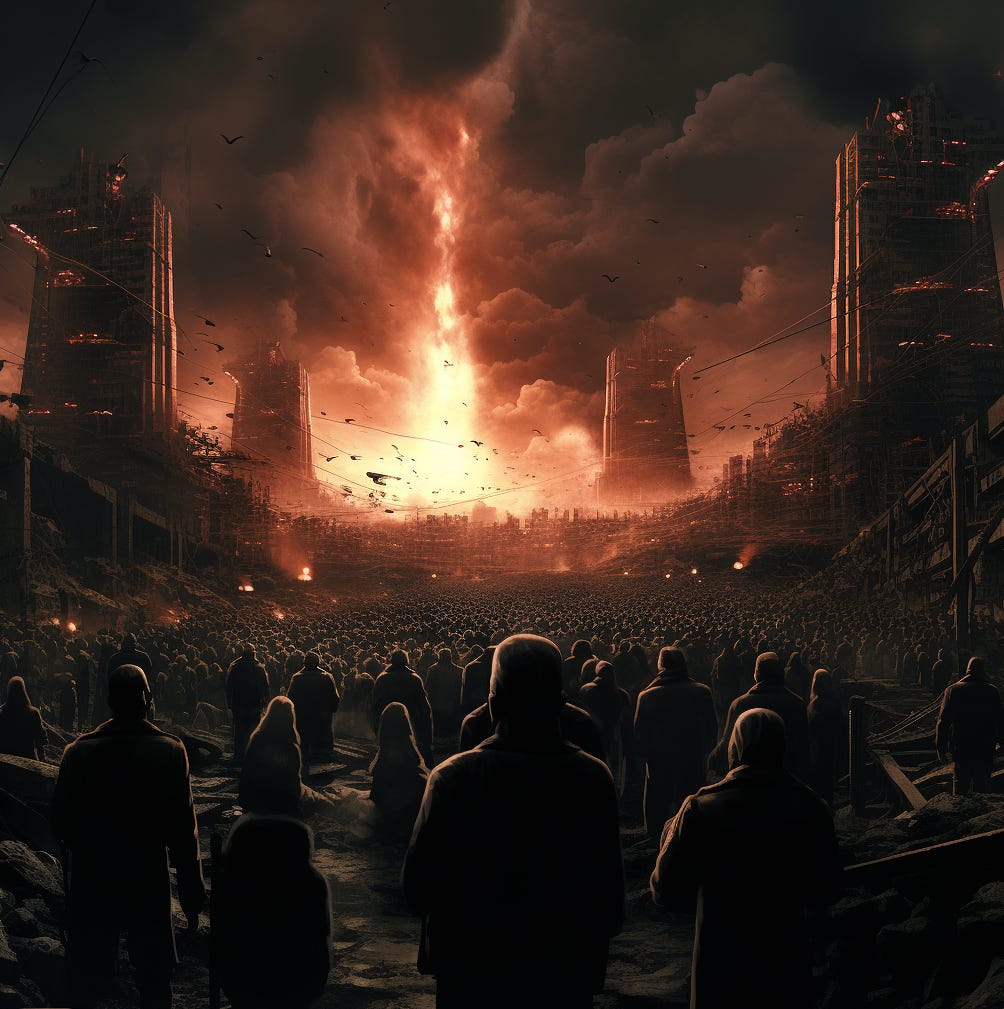
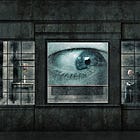
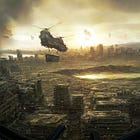
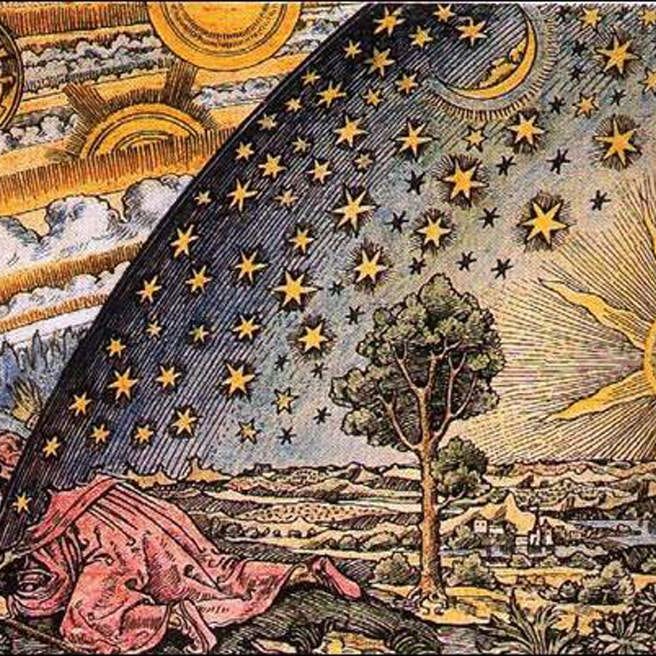
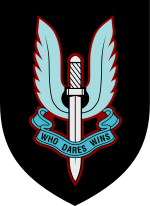


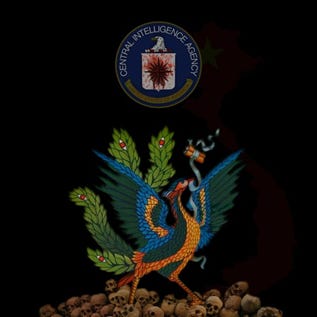

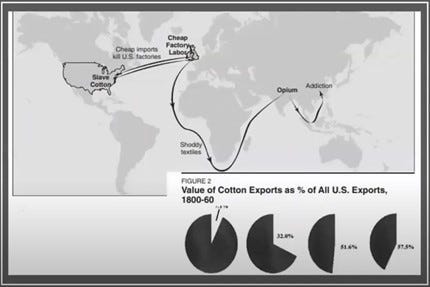
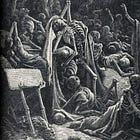
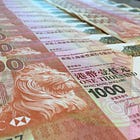
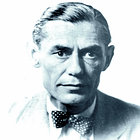
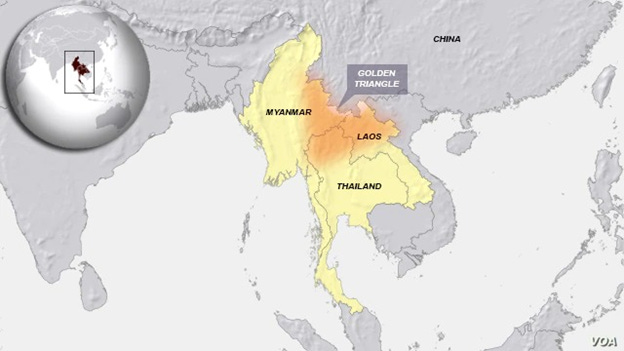
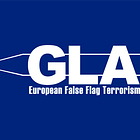
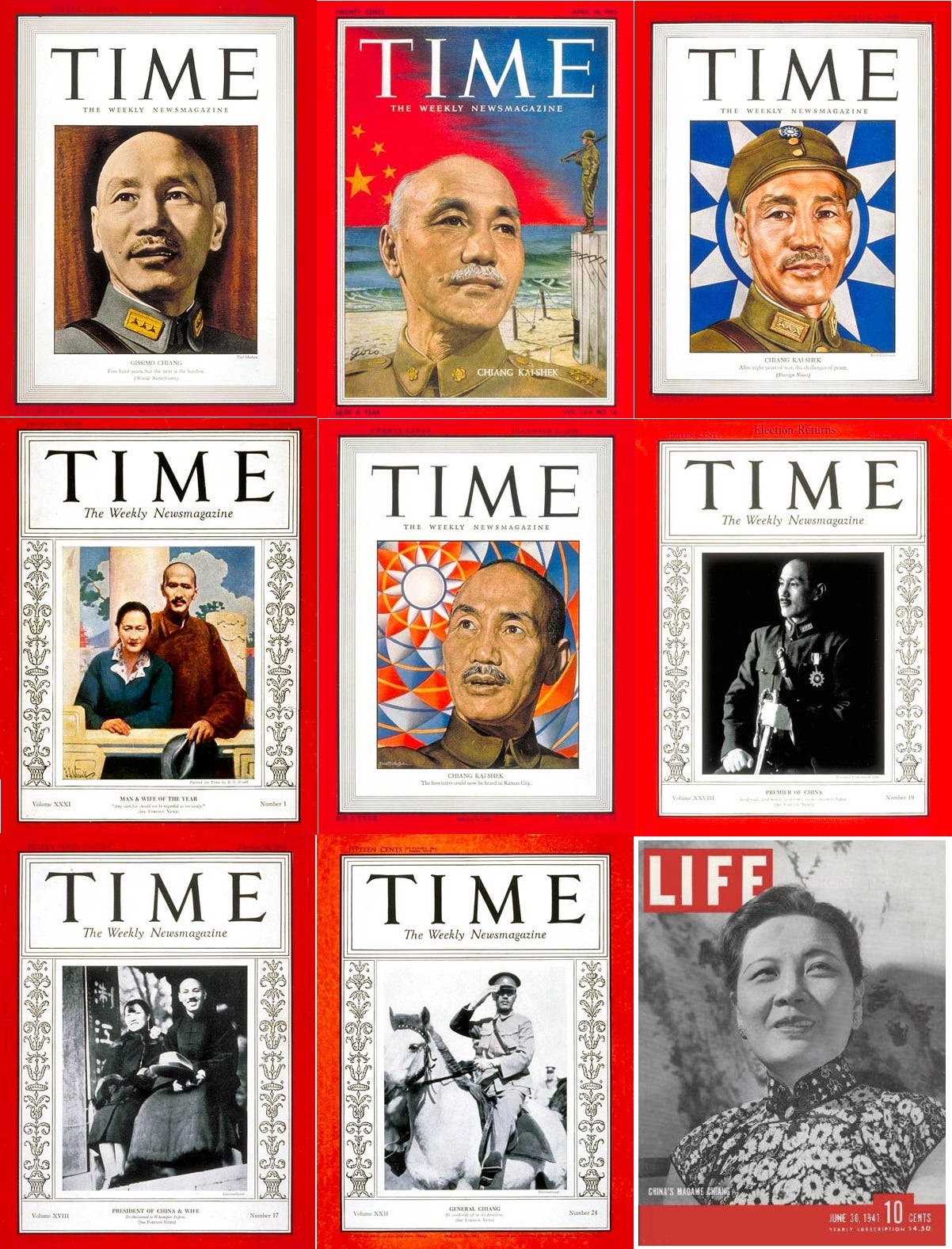
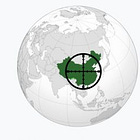
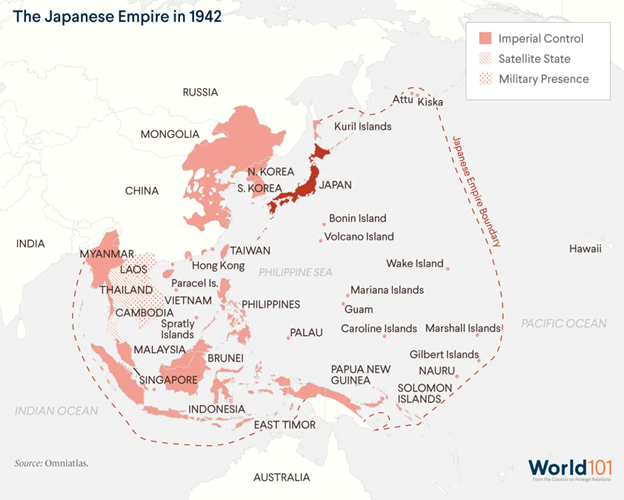

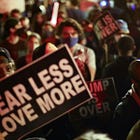
Thank you for these insights into US dirty tricks in Vietnam and how they ripped apart the social fabric, facilitating the death and mayhem of the American war there. Interesting to note the long history of French exploitation of the region prior to the advent of communism. Peace researcher and mediator Johan Galtung once told me that Ho Chi Minh was at the 1919 peace conference in Versailles where he initially applauded Woodrow Wilson's affirmation of self-determination for all people, until, that is, Wilson made it clear that "all people" did not include the residents of Southeast Asia....
Indonesia proclaimed its independence from the Dutch in August 1945, but it would take more than 5 years before this was recognised (Round Table Conference; The Hague, Dec. 1950). in Indonesia too a vicious civil war broke out, intertwined with the decolonisation and the repatriation of former Dutch civilians after the Japanese occupation. scars still run deep among those involved. it's absolutely horrifying to think the patterns of willfull destruction and violence, perpetrated by foreign spooks and military are still being played out.